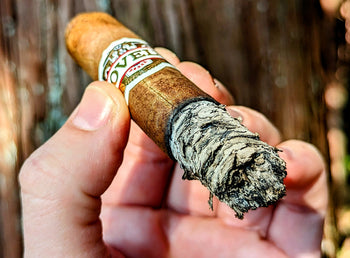Premium cigar blends can be constructed from a number of different tobacco options. Strain sub-variants, semi-forgotten forms of rainforest foliage, and hyper-specialized styles of strength and spice all have their place in the world of top-shelf stogies.
But despite all of the options that are available to cigar manufacturers and their master blenders, a few staples still seem to stand out. One of these is the widely utilized habano leaf. A name that at one point, merely meant a cigar that was crafted purely from Cuban tobacco leaves.
As a hybrid strain, habano tobacco first emerged in Cuba in the early 1990s as a potential alternative to the diseased crops of corojo leaf that were withering on the stalk. It took a while, but by the late 1990s, almost all of Cuba's wrapper leaf tobacco was replaced with habano leaf.
The result was a corojo hybrid that could withstand disease, and still, produce a cigar flavor profile that was pleasing to the palate. A peppery, yet earthier, almost cocoa-like woodsy taste.
One that was well suited to lengthier fermentation periods and darker maduro methodologies, or stints in partial shade for a more refined, milk tea-spiced sort of smoke.
Naturally, it didn't take long for these Cuban-crafted seeds to make their way over to countries like Nicaragua, Honduras, Ecuador, and the Dominican Republic. There, farmers and cigar makers alike reveled in the crop's ability to pro prosper and produce consistent crops year after year. Hence the habano leaf is one of the most widely utilized in the world of premium cigars today.

